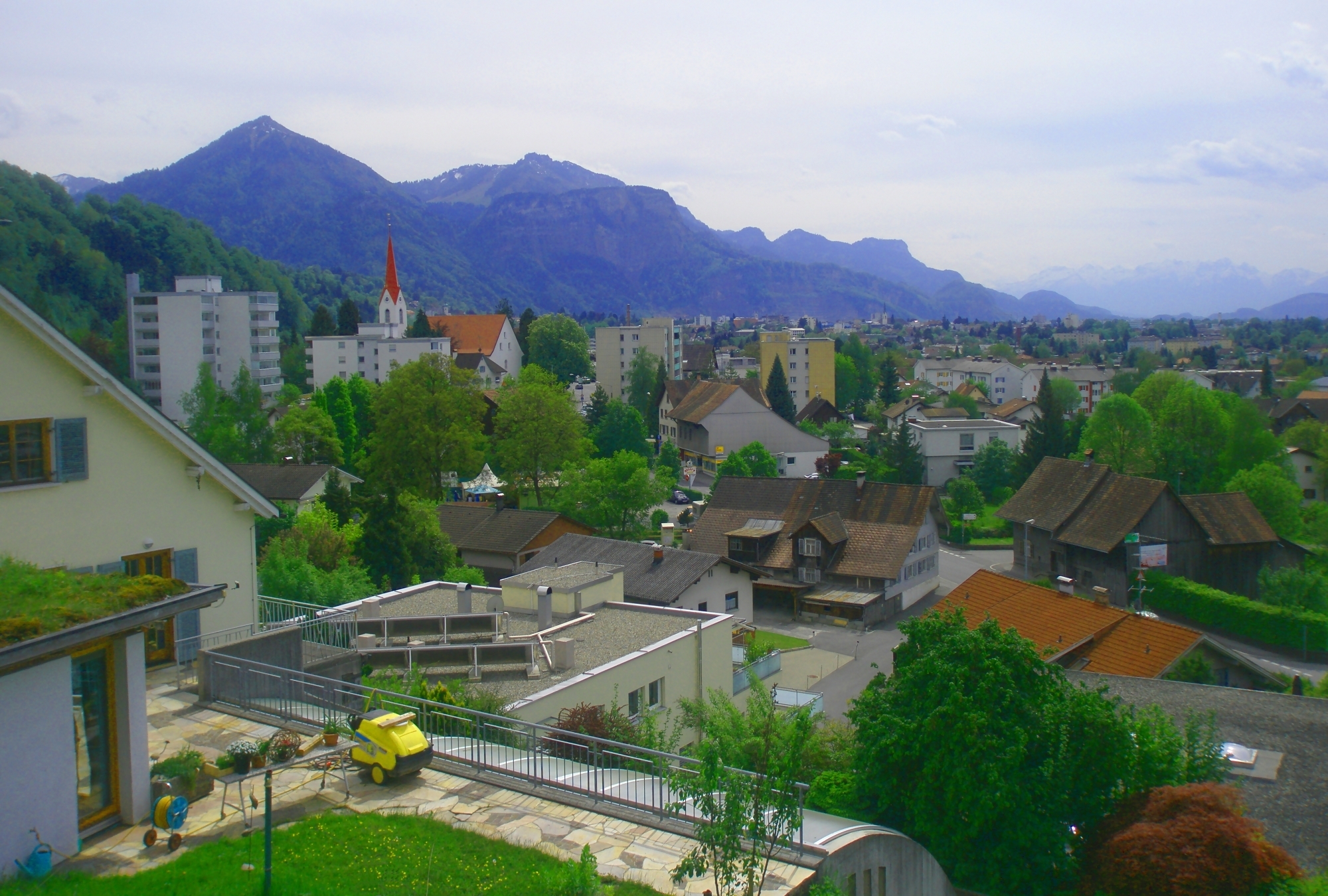Haselstauden on:
[Wikipedia]
[Google]
[Amazon]
Haselstauden (also known as ''Hazeltown'') has been the fourth district of
 The actual name Haselstauden was first recorded in 1536. In the following decades, an increasing immigration of people from the adjacent mountains was recorded. The small village became more important towards the end of the 18th century when the construction of Dornbirn's first Catholic parish church "Zu unserer Lieben Frau Mariä Heimsuchung" began.
Dornbirn received city rights in 1901 and Haselstauden became its fourth district in 1902. The other districts were Hatlerdorf, Oberdorf and Niederdorf (today "Markt"). In 1994, Rohrbach district was rezoned from sections of Haselstauden and Markt.
The actual name Haselstauden was first recorded in 1536. In the following decades, an increasing immigration of people from the adjacent mountains was recorded. The small village became more important towards the end of the 18th century when the construction of Dornbirn's first Catholic parish church "Zu unserer Lieben Frau Mariä Heimsuchung" began.
Dornbirn received city rights in 1901 and Haselstauden became its fourth district in 1902. The other districts were Hatlerdorf, Oberdorf and Niederdorf (today "Markt"). In 1994, Rohrbach district was rezoned from sections of Haselstauden and Markt.
Dornbirn
Dornbirn () is a city in the westernmost Austrian state of Vorarlberg. It is the administrative centre for the district of Dornbirn, which also includes the town of Hohenems, and the market town Lustenau.
Dornbirn is the largest city in Vorarlb ...
, Austria
Austria, , bar, Östareich officially the Republic of Austria, is a country in the southern part of Central Europe, lying in the Eastern Alps. It is a federation of nine states, one of which is the capital, Vienna, the most populous ...
since 1902, when Dornbirn was given the status of municipality. It's also the city's northernmost district.
Geography
In the west, Haselstauden borders on the district of Rohrbach, in the south on the district of Markt, in the north on Schwarzach, in the northeast on the community ofAlberschwende
Alberschwende is a municipality and a village in the district of Bregenz in the Austrian state of Vorarlberg.
Population
Notable people
* Hermann Gmeiner
Hermann Gmeiner (23 June 1919 – 26 April 1986) was an Austrian philanthropist and t ...
, and in the east on the community of Schwarzenberg.
History
The earliest documented mention of Haselstauden dates back to 17 September 1249: In a written record by Pope Innocent IV "Stiglingen" is alluded to, along with "Tornburon" (Dornbirn
Dornbirn () is a city in the westernmost Austrian state of Vorarlberg. It is the administrative centre for the district of Dornbirn, which also includes the town of Hohenems, and the market town Lustenau.
Dornbirn is the largest city in Vorarlb ...
) and "Kuun" (today's parcel Knie). "Stiglingen" signified the populated area along the Stiglbach. The name probably derives from the – commonly used in Austria – word ''staircase/stairs'' ("Stiege"). The meaning of this "staircase" has not been definitively reconstructed, but it may have referred to a very rugged river course with sometimes very steeply sloping levels.
 The actual name Haselstauden was first recorded in 1536. In the following decades, an increasing immigration of people from the adjacent mountains was recorded. The small village became more important towards the end of the 18th century when the construction of Dornbirn's first Catholic parish church "Zu unserer Lieben Frau Mariä Heimsuchung" began.
Dornbirn received city rights in 1901 and Haselstauden became its fourth district in 1902. The other districts were Hatlerdorf, Oberdorf and Niederdorf (today "Markt"). In 1994, Rohrbach district was rezoned from sections of Haselstauden and Markt.
The actual name Haselstauden was first recorded in 1536. In the following decades, an increasing immigration of people from the adjacent mountains was recorded. The small village became more important towards the end of the 18th century when the construction of Dornbirn's first Catholic parish church "Zu unserer Lieben Frau Mariä Heimsuchung" began.
Dornbirn received city rights in 1901 and Haselstauden became its fourth district in 1902. The other districts were Hatlerdorf, Oberdorf and Niederdorf (today "Markt"). In 1994, Rohrbach district was rezoned from sections of Haselstauden and Markt.
Culture
During carnival season there are two events in particular that attract thousands of visitors annually. In addition to the traditional " Funkenfeuer" (bonfire) the Haselstauder carnival parade is one of the largest in the area. On May 1, an Austrian state holiday, the "Tag der Blasmusik" (literally ''Day of Brass Music'') takes place. Musicians wander through the streets and play music on theirwind instrument
A wind instrument is a musical instrument that contains some type of resonator (usually a tube) in which a column of air is set into vibration by the player blowing into (or over) a mouthpiece set at or near the end of the resonator. The pitc ...
s.
On "gumpiger Donnerstag", the beginning of the carnival itself, roast meat is traditionally stolen as a prank from ovens throughout Dornbirn. On the following day, "bromiger Friday", children blacken themselves with soot.
Notable people from Haselstauden
* Friedrich Rafreider, former player in the Austrian soccer squad * Armin Diem, poetReferences
{{authority control Cities and towns in Dornbirn District